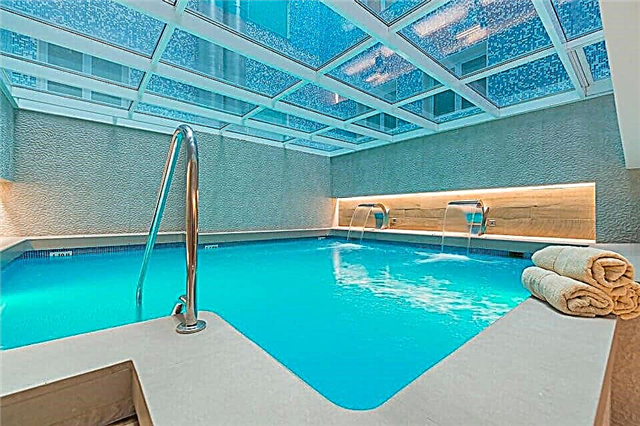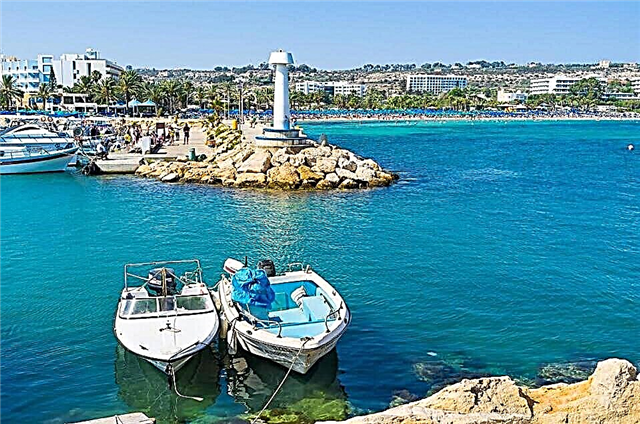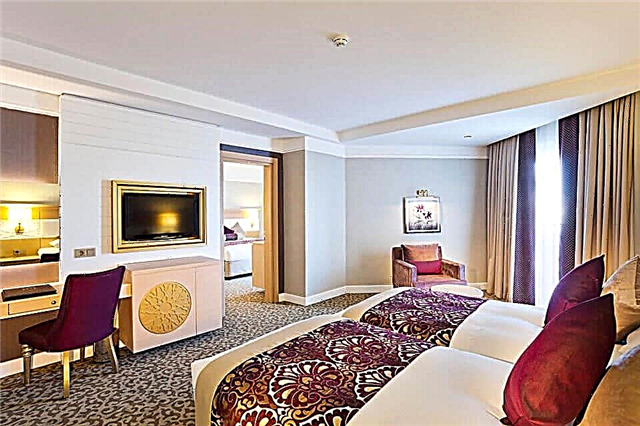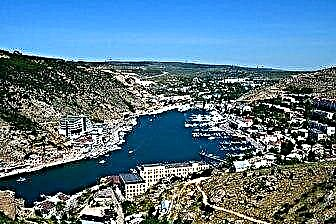The small resort town of Balaklava, located near Sevastopol, has a long rich history and boasts architectural monuments from different periods. Since ancient times, its unique location has attracted settlers who could safely hide their ships in a bizarre and winding bay.
First of all, tourists go to see the medieval Genoese fortress Cembalo, which was once a powerful bastion and protected the entire stretch of the coast. Then they go on a boat trip along the bay or get by water transport to one of the surrounding beaches. The third item is visits to memorable places, among which are monuments, temples, military facilities of the Soviet era and museums.

Apartments and hotels at affordable prices.
from 500 rubles / day
What to see and where to go in Balaklava?
The most interesting and beautiful places for walking. Photos and a short description.
Balaklava Bay
Balaklava or as it is often called - "Secret Bay" was formed as a result of a tectonic fault. It cuts into the coast for 1.5 km, widening and narrowing in different places (the width of the narrowest passage is about 50 meters). Because of this shape, the bay is practically invisible from the side of the Black Sea, which in the past was very convenient for ships hiding in the bay.

Cembalo fortress
The ensemble of structures on the Fortress Hill, built during the times of the Genoese Republic in the XIV-XVIII centuries. Earlier, behind the ring of walls there was a whole city, reliably fortified and guarded by a garrison. In the second half of the 15th century, Chembalo was captured by the Turks, and in the 18th century, military units of the Russian Empire were located on its territory. In subsequent years, the complex gradually fell into decay, until only ruins remained from it.

Object 825GTS
A secret Cold War base used to dock and repair nuclear submarines and store ammunition. In 1993, the facility was closed and in the next 10 years it was actually destroyed and looted, as its structures contained rare non-ferrous metals. In the 2000s, a museum dedicated to the history of Balaklava and milestones in the development of submarine and surface fleets with an exhibition of antique weapons was created on the territory of the former base.

Nazukin embankment
Balaklava's promenade, where a diving center, a yacht club, a cinema, restaurants, bars and marinas are located. From the coast, a view of the Balaklava Bay and the mountain with the ruins of the Chembalo fortress opens. Along the embankment there are houses of the late XIX - early XX centuries - former private dachas and hotels. From here you can go on a boat trip along the bay.

Balaklava History Museum
The museum building is located on the Nazukin embankment. Visitors are offered not only a tour of the exposition with an excursion, but also walks along the bay with access to the sea, tasting of local cuisine, as well as a street route that includes a visit to the Cembalo fortress. The permanent collection of the museum is dedicated to the history of Balaklava during the Crimean War. A visit to the institution is possible as part of an excursion group.

Monument to Lesya Ukrainka
The writer Lesya Ukrainka was in Balaklava twice - in her early youth with her parents and in a more mature age with her husband. On their last visit, the couple lived in the city for two months in a house on the Nazukin embankment. In 2004, a monument was erected in honor of the poetess in the central square. It is made in the form of a half-figure, fixed on a pedestal (initially the sculptor planned to sculpt a bust, but in the process of work he was greatly carried away).
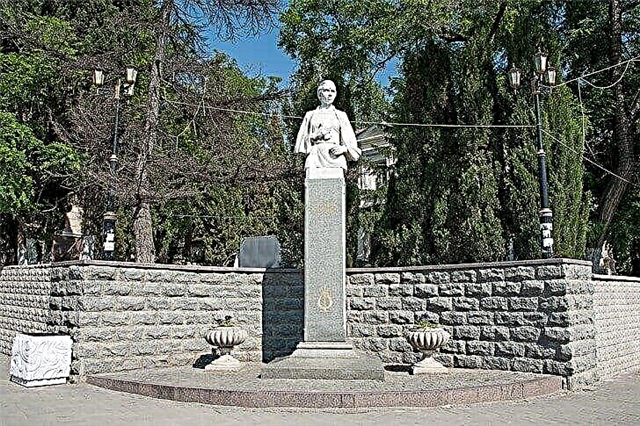
Monument to Kuprin
AI Kuprin lived in Balaklava in 1904 - 1906, where he was found by the First Russian Revolution. The writer was so shocked by what was happening that he wrote an essay "Events in Sevastopol", published in a St. Petersburg newspaper. Because of this material, he was forced to leave Balaklava. A monument in his honor adorned the city embankment in 2009. The sculpture depicts the writer leaning against the fence and pensively looking into the distance.

South and North forts
Defensive structures of the early XX century, which were built to protect the Sevastopol fortress from the south. Fortifications are a system of ditches, roads, engineering networks and concrete structures cut into the rock, where you could reliably hide and store ammunition. It was also planned to install artillery pieces, but because of the October Revolution, work stopped.

Barrel of death
On the territory of the South Fort there is a very strange object - an iron "barrel" suspended over an abyss. At one time, it played the role of an observation post and was equipped with optical instruments. In the 1960s, a legend spread that the Germans threw prisoners of war into the sea from this structure during the Great Patriotic War, so they began to call it the "barrel of death."

Object 100
A secret underground battery from the 1950s that was designed to engage naval targets. After the collapse of the USSR, all structures containing non-ferrous metal were dismantled, and the object itself was mothballed. It aroused interest only among fans of wandering through the abandoned concrete labyrinths. In 2016, a message appeared that the military were going to restore the complex, so its further fate is unknown.

19th gun battery
The construction of the battery began in 1914 under the Tsar, but the completion of the work took place in the Soviet period. It was equipped with powerful weapons that were supposed to hit enemy ships from a distance of 20 km, but in 1941 the battery was unable to defend Sevastopol from the German army. After 1991, the need for it disappeared. Today, only the concrete skeleton has survived from the object, since all the metal structures were removed.

Chorgunsky bridge-aqueduct
The aqueduct is part of the mid-19th century plumbing system. It was built in imitation of the ancient style of Inkerman stone and today it looks like it was actually built by the ancient Romans. The water pipeline was not destined to last long - it was destroyed during the Crimean War. After the end of hostilities, it was decided not to restore it. The Chorgun aqueduct bridge is the best preserved part of the system.
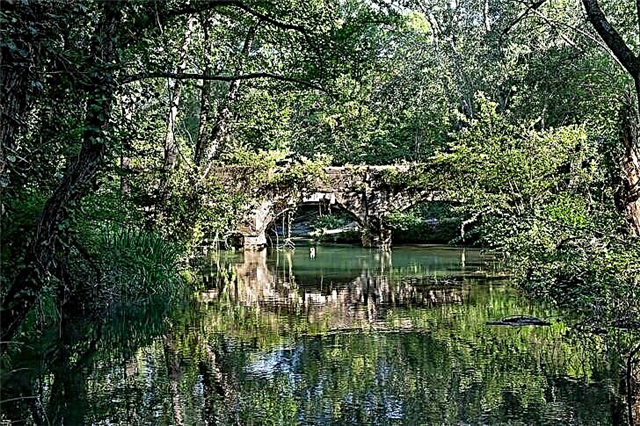
Kadykovsky quarry
Previously, limestone was mined in the quarry. After the rock reserves were depleted, the pit was abandoned and gradually it was filled with water. From the outside, it looks like a crater of an extinct volcano with a lake at the bottom and stepped walls of red rock. You can go down the spiral road, but you need to move very carefully, as from time to time unsteady slopes collapse.

Temple of the Twelve Apostles
Initially, the church was built by the Genoese in the middle of the XIV century, but this building has not survived to us. What tourists can see today is the building of 1794, reconstructed in 1875 after the Crimean War. Until the middle of the 20th century, the temple was used for its intended purpose, in the 1990s it was re-consecrated. The relics of St. Basil the Blessed and St. Sergius of Radonezh are kept inside. In architectural terms, the building is a cross-domed limestone structure, decorated with columns of the Doric order.

Georgievsky monastery
Orthodox monastery located near Cape Fiolent on the Black Sea coast. According to legend, it was founded in the 9th century by Greek immigrant navigators, who were struck off the coast of Crimea by a sudden storm, but thanks to the prayers of St. George, they managed to survive. The first written evidence of the monastery's existence dates back to the 16th century.The monastery flourished both in the Middle Ages and during the times of the Crimean Khanate, but it was seriously damaged during the Soviet era. The rediscovery took place in 1994.

Georgievskaya rock and Jasper beach
St. George's Rock is a small cliff in the sea, located at a distance of 140 meters from the coast. It was on this rock that St. George. At the end of the 19th century, a marble cross was installed on the stone, which was removed during the Soviet era (a new one was installed in 1991). The rock is clearly visible from Jasper Beach - one of the best swimming areas in Crimea. This place is distinguished by picturesque landscapes and clear waters.

Vasili beach
The beach is located next to Vasilievskaya Balka. Its territory is fenced on all sides by almost sheer cliffs 150 meters high. Vasili is considered one of the best areas of the coast in the vicinity of Sevastopol, intended for swimming. It features clear water and mesmerizing views. For the convenience of tourists, some kind of infrastructure has been organized - there are awnings and sun loungers.

Silver and Gold beaches
Silver or Middle Beach is 15 minutes away from Balaklava by sea. If you go there on foot, then you need to overcome 4 km through mountainous terrain. You will have to swim for 25-30 minutes to the Golden Beach or walk 6 km. Both parts of the coast are very picturesque and it is a pleasure to swim there. To get to the beaches, you need to take a boat on the Nazukin embankment.

Cape Fiolent
Today Cape Fiolent is part of the city limits of Sevastopol, and once it was a place untouched by man, where one could find solitude. This area is considered one of the most beautiful in the Western Crimea, although the chaotic buildings slightly spoil the view and do not allow you to fully enjoy the restless sea surface and the charm of sheer cliffs stretching for many kilometers on both sides.

Cape Aya
Cape Aya is located on the territory of the landscape reserve of the same name, where rare plant species grow and animals listed in the Red Book live. The climate in this natural area is similar to the Mediterranean. From the cape stretches the Ayazma tract, at the top there is a giant funnel filled with multi-colored boulders, at the base there are small grottoes with lapis lazuli water.



